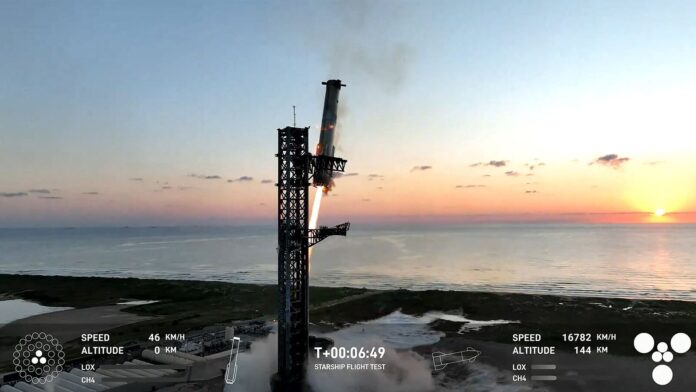Reentry: SpaceX, Elon Musk and the Reusable Rockets that Launched a Second Space Age. By Eric Berger. BenBella Books; 400 pages; $31.95 and £26.99
The degree to which the Falcon 9, a rocket developed by SpaceX, dominates its competitors is not just unprecedented in space travel. It is unprecedented in more or less every field of human endeavour. In 2023 Falcon 9s launched over a thousand tonnes of payload into orbit, some 80% of the worldwide total. Whereas previous launchers rarely managed much more than ten blast-offs a year, Falcon 9s now leave their launchpads in California and Florida roughly ten times a month. The first stages of Falcon 9s have been successfully reused after returning from space and landing themselves more than 300 times. No other orbital launcher has managed such a thing even once.
“Reentry” by Eric Berger, the senior space editor at Ars Technica, a news website, describes how this was achieved. The ingredients which produced the Falcon 9 were excellent engineers, a new form of government support for spaceflight, a hard-driving culture and an extraordinarily demanding boss (some of whose consistent demands were crucial).
The story starts in 2008. SpaceX’s first rocket, the Falcon 1, was small, troublesome and uncommercial. By the time it finally reached orbit—on the fourth attempt—SpaceX had burned through almost all the money which Elon Musk, the company’s founder, had available. For the company to have a future it needed some big government contracts, and that required a much larger launcher: the Falcon 9, which required nine of the Merlin engines which powered the Falcon 1 to be yoked together.
That challenge fell to Tom Mueller, SpaceX’s first employee, who had developed the Merlin engine in the first place. His team’s efforts led to the arguably company-saving first test firing of the Falcon 9’s first stage in November 2008. “We were out there beating history, but Elon was still pissed at us,” Mr Mueller said. “Like everything else we’ve ever done, it was way slower than Elon wanted, and way faster than anyone had ever done it before.”
Mr Berger’s book is full of stories of impressive achievements being met in such ways. It also shows clearly why people put up with such things. Mr Musk’s employees knew that he really cared about making better rockets, that he was taking big financial risks, that he was fully engaged. They knew that he would always ask them to do things for less money and in less time. But they came to value his immutable insistence on the overall goal of making a rocket that was largely reusable and flew every few days, even though it meant demanding things which seemed impossible.
Mr Musk and SpaceX’s engineers were aligned in their desire to make spacecraft that would change the course of history. Without that alignment, it is hard to imagine his impulsive, hectoring management yielding such results. Mr Musk’s desires for X, the social-media firm he bought in 2022, are apparently that it should provide a powerful platform from which to spew his own rubbish and facilitate the spread of disinformation in the service of a disturbing political agenda. This is not a vision to inspire employees capable of greatness.
SpaceX has doubled in value, to $210bn, since early 2022 (in the same period the value of X seems to have fallen by more than half). Part of the price of greatness for its employees was knowing that it was fleeting. The most successful senior managers, Mr Berger reports, adopted a curiously empowering fatalism in the face of Mr Musk’s demands: however much you delivered, however well you managed expectations and your team, at some point you would find yourself unable to go on.
In a recent biography of Mr Musk, Walter Isaacson stated that Mr “Musk had redesigned the Falcon 9” over a few months in 2015. Anyone who raised a sceptical eyebrow will enjoy the way Mr Berger’s book unpacks and redistributes the agency which that sentence locates so narrowly. Anyone who accepted Mr Isaacson at face value should read this book to disabuse themselves. They will get a riveting tale of how remarkable engineering actually gets done.
For more on the latest books, films, TV shows, albums and controversies, sign up to Plot Twist, our weekly subscriber-only newsletter
© 2024, The Economist Newspaper Ltd. All rights reserved. From The Economist, published under licence. The original content can be found on www.economist.com
Catch all the Business News , Corporate news , Breaking News Events and Latest News Updates on Live Mint. Download The Mint News App to get Daily Market Updates.
MoreLess
#SpaceX #guide #exceptional #engineering
